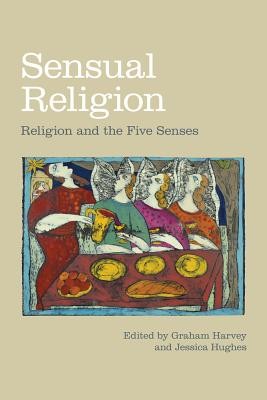
- We will send in 10–14 business days.
- Publisher: Equinox Publishing (UK)
- Year: 2018
- Pages: 252
- ISBN-10: 1781794146
- ISBN-13: 9781781794142
- Format: 15.6 x 23.4 x 2.1 cm, kieti viršeliai
- Language: English
- SAVE -10% with code: EXTRA
Sensual Religion (e-book) (used book) | bookbook.eu
Reviews
Description
Sensual Religion demonstrates the value of paying attention to the senses and materials in lived religion and also leads the way for improved studies of religion as sensuality.
Each of the five senses - vision, hearing, taste, touch and smell - will be covered by two chapters, the first historical and the second contemporary. The historical discussions focus on the sensuality of religion in ancient Greece, Samaria, Rome and Byzantium -- including reflections on their value for understanding other historical and contemporary contexts. Chapters with a contemporary focus engage with Chinese, African-Brazilian, Sikh, First Nations and Métis, and Spanish Catholic religious lives and activities. Beyond the rich case studies, each chapter offers perspectives and arguments about better ways of approaching lived, material and performative religion -- or sensual religion. Historical and ethnographic critical and methodological expertise is presented in ways that will inspire and enable readers to apply, refine and improve on their practice of the study of religions. In particular, our intention is to foreground the senses and sensuality as a critical issue in understanding religion and to radically improve multi- and inter-disciplinary research and teaching about the lived realities of religious people in this sensual world.
EXTRA 10 % discount with code: EXTRA
The promotion ends in 21d.13:26:19
The discount code is valid when purchasing from 10 €. Discounts do not stack.
- Publisher: Equinox Publishing (UK)
- Year: 2018
- Pages: 252
- ISBN-10: 1781794146
- ISBN-13: 9781781794142
- Format: 15.6 x 23.4 x 2.1 cm, kieti viršeliai
- Language: English English
Sensual Religion demonstrates the value of paying attention to the senses and materials in lived religion and also leads the way for improved studies of religion as sensuality.
Each of the five senses - vision, hearing, taste, touch and smell - will be covered by two chapters, the first historical and the second contemporary. The historical discussions focus on the sensuality of religion in ancient Greece, Samaria, Rome and Byzantium -- including reflections on their value for understanding other historical and contemporary contexts. Chapters with a contemporary focus engage with Chinese, African-Brazilian, Sikh, First Nations and Métis, and Spanish Catholic religious lives and activities. Beyond the rich case studies, each chapter offers perspectives and arguments about better ways of approaching lived, material and performative religion -- or sensual religion. Historical and ethnographic critical and methodological expertise is presented in ways that will inspire and enable readers to apply, refine and improve on their practice of the study of religions. In particular, our intention is to foreground the senses and sensuality as a critical issue in understanding religion and to radically improve multi- and inter-disciplinary research and teaching about the lived realities of religious people in this sensual world.


Reviews